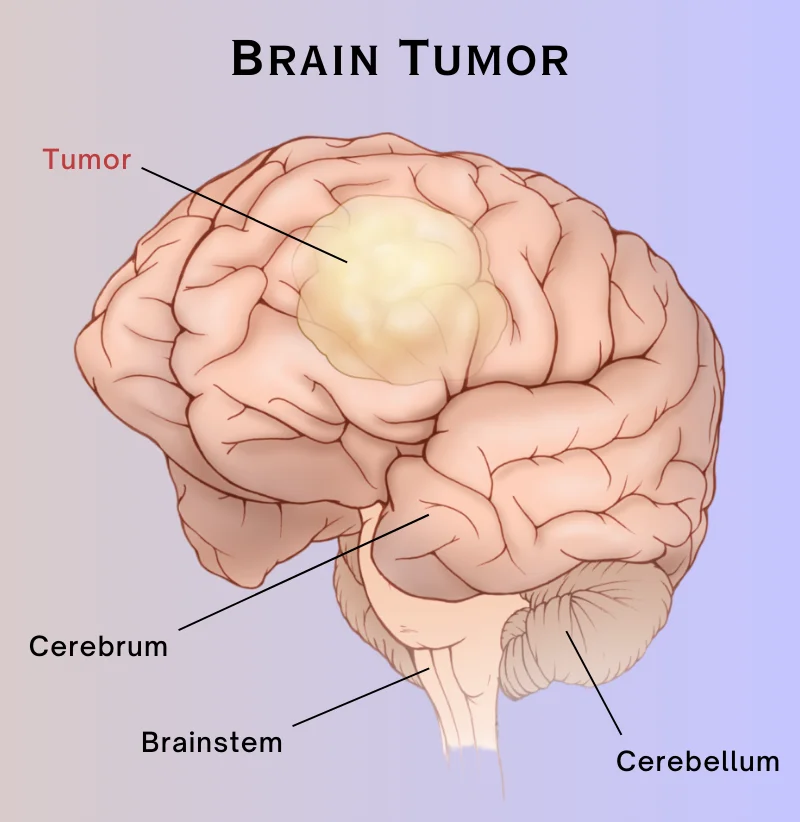Brain tumors and cancers
Brain tumor and other cancers of the spine and central nervous system (CNS) is one of the rarest types of cancer. As stated by the National Cancer Institute, just 1.4% of all new cancers are CNS and brain tumors. Unfortunately if you are one of those people who are diagnosed with a brain cancer, you perhaps desire to know about brain cancer survival rate.
Brain cancer survival rate is used to estimate brain cancer life expectancy. It’s important to understand that cancer survival rate is just an estimated figure. The actual prognosis depends on various factors and may vary from person to person.
A glance at brain tumor survival rate
Brain cancer survival depends on factors such as the patient’s condition, malignancy of cancer, treatment given to the patient and level of fitness of the patient. It is observed that some types of brain cancers such as meningioma, anaplastic, ependymoma and oligodendroglioma are highly treatable. Brain tumor survival also depends on the whether the diagnosis of the cancer is done early or late. Most of the times brain tumors behave as silent killers and are not detected until advanced to aggressive stages.
According to The American Cancer Society, in the medical community, “brain tumor” is a common term for “brain cancer” and it is described as an uncontrolled growth of abnormal cells in the brain as well as in the spinal cord (and nearby areas of the brain).
Factors governing brain cancer survival rate and prognosis
According to the American Cancer Society, a brain tumor is described as the uncontrollable growth of abnormal cells in the brain and spinal cord. These tumors can be cancerous or non-cancerous, may progress and can cause damage to normal brain tissues, leading to severe disability or even death.
Recommended:
Real life experiences about coping with cancer
Brain Tumor: Causes, Signs, Symptoms, Treatment
As opposed to other cancers, there is no formal staging system for brain cancers because brain tumors almost never metastasize to other body parts. A healthcare professional may consider a number of factors when determining brain tumor survival rate. These may include such as:
- Age of the patient
- If the cancer is affecting various day to day activities and general bodily functions
- The type of brain cancer
- How quickly cancer progresses
- Location of the tumor and its overall size
- Whether the tumor can be removed using surgical procedures
- In case the tumor has metastasized to other parts of the brain or CNS
Brain cancer survival rate

Generally, brain cancer survival rate specifies to the number of people who are still alive five years after the diagnosis of a brain tumor. It is typically expressed as a proportion or percentage. A malignant brain tumor survival rate of 69% for example indicates that 69 people out of 100 are still alive at least five years after the treatment for a brain cancer. You may also hear researchers or your healthcare professionals talk about a 10-year or even 15-year brain cancer survival rate. The brain cancer survival rate data for many types of tumors tend to be considerably better for those who are diagnosed at a younger age.
Here is a list of five-year brain tumor survival rate statistics provided by the American Cancer Society based on the age of diagnosis of a person with brain tumor:
- An estimated 700,000 Americans are living with a brain tumor
- 80% of tumors are non-cancerous
- 20% of tumors are cancerous or malignant
- An estimated 78,980 people will receive a primary brain tumor diagnosis in 2018
- 55,150 will be benign
- 23,830 will be malignant
- The average survival rate for all malignant brain tumor patients is about 34.7%
- Male: 33.8%
- Female: 36.4%
- The five-year survival rate for the most common form of primary malignant brain tumors including glioblastoma multiforme is 5.5%
- A predictable 16,616 people will die from malignant brain tumors in 2018
Brain tumors in adults
The most prevalent brain tumors associated with adults include:
- Meningiomas make-up 36.6% of all primary brain tumors
- Gliomas ( glioblastoma, ependymomas, astrocytomas, and oligodendrogliomas) make-up 74.6% of malignant brain tumors
Brain tumors in children
- Over 28,000 children bearing 0-19 years of age are projected to be living with a brain tumor in the US.
- About 4,610 new cases of childhood and adolescent bearing 15-19 years of age with primary malignant and non-malignant brain and CNS tumors are expected to be diagnosed in 2018
- The average survival rate for all primary pediatric (0-19 years of age) malignant brain tumors is estimated at 73.9%
- Pediatric brain tumors are the foremost cause of cancer-related deaths among children and adolescents ages 0-19.
The most widespread brain tumor in children bearing 0-14 years of age includes:
- Pilocytic Astrocytoma
- Malignant Glioma
- Medulloblastoma
- Neuronal and mixed neuronal-glial tumors
- Ependymoma
Statistics related to brain cancer survival rate
Brain cancer survival rate defines the number of people who have lived for five years or more after the diagnosis. Knowing about the weak prognosis, it can appear troublesome for many but it is good to know that spinal cord and brain tumors are one of the rarest forms of cancer and accounts for about only 2% of all cancers. Survival rate cannot be an accurate estimate but gives us an idea about the statistical analysis of how many people are affected and what we can do to prevent it.
Brain is a complicated organ, and therefore, not all types of brain tumors are known or understood fully. Though brain cancer is a rare type of cancer, but in all CNS (central nervous system) disorders, just brain tumors account for about 80% of the entire risk. A recent study stated that brain and other nervous system cancers is the 10th leading cause of death for women in the world.
Brain tumor survival: For different types of brain tumors
Meningiomas are known to be the most common form of brain tumors. A study in the United Kingdom estimated that the five-year survival rate for this type of brain cancer is more than 65%. It was also estimated that 80 out of 100 people (80%) could survive spinal cord tumors for 5 years or more after the diagnosis.
Pituitary and pineal tumors were also estimated to have good survival rate. About 70% of the patients survived for 5 years or more after they were diagnosed with it. Another type of brain cancer, known as glioblastomas is seen to have very low relative survival rates. It was estimated that only about 4% people survived for five years after the diagnosis.
Malignant brain tumor survival rate
There is no defined way to exactly know how long a person will survive if he is suffering from brain or spinal tumors. There are strong chances of secondary brain cancer or brain cancer metastasis even if the primary brain cancer is treated. The survival rate for brain cancer or CNS tumors patients is expected to be 34% for men and 36% for women. The overall brain cancer survival rate for 5 years was estimated to be about 33% from the year 2008 – 2014.
Brain cancer life expectancy: Age dependent
An estimate suggested that brain tumor survival rate for five years can also depend on the age.
- Rate of brain tumor survival in people of age 0 to 19 years was about 65% brain tumor survival.
- For age 20 to 24 years, brain tumor survival rate was about 49%
- For age 45 to 54 years, rate of brain cancer survival was more than 20%
- For age 55 to 64 years, life expectancy was estimated to be more than 11%
- For age 65 to 74 years, brain tumor survival rate was estimated to be about 6%
- Age 75 or older: brain tumor survival rate was less than 4% estimated.







